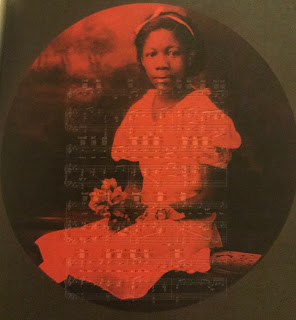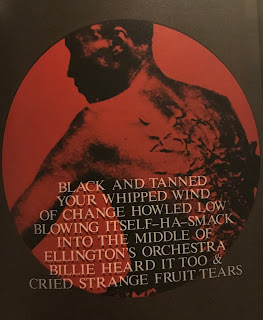Carrie Mae Weems
 |
| Untitled (Woman Standing Alone), W Magazine. |
Weems was not just occupying a seat at the table way before it became a postmodern metaphor, she was planting a quiet seed in the midst of all that white institutionalized history.
 |
| Untitled, 1990, Artstor. |
Born on April 20, 1953 in Portland, Oregon, Carrie Mae Weems, second of seven children, attended the California Institute of the Arts in Valencia, California at age twenty-seven, having previously studied dance with the renowned Anna Halprin. She acquired her MFA from the University of California, San Diego abd studied folklore at University of California, Berkeley. Afterwards, she moved to New York City inspired by The Black Photography Annual (1973-1980 Black photographer collective). Roy DeCarava and Gordon Parks (photographers of Black life) and fashion photographer Coreen Simpson were some prominent Black artists on her radar.
 |
| Megan, 2003, Artstor. |
“Art is the one place we all return to for solace.”
In her evocative photographs— both the ones “borrowed” from institutions and the ones she captures— she takes the flesh of body and sews the heart of language. The series From Here I Saw What Happened and I Cried reframes J. T. Zealy’s scientific daguerreotypes, “a commissioned anthropological project of first- and second-generation Columbia plantation slaves (men, women, and children), mostly nudes, that focused on body types for comparative analysis.... perpetuating racial stereotypes while promoting white superiority.” Weems appropriated these images as circular, flaming red c-prints layered with jarring, acidic words embossed on the figures attached to history, conveying innermost thoughts and feelings. By using the confrontational plot device of the second-person voice, Weems orchestrated a reckoning, an uprising that suggests that documented individuals knew exactly what they were seen as—unattractive, less than human, servants.
 |
| Some Said You Were The Spitting Image Of Evil, c-print with sandblasted text on glass, 26 3/4” x 22 3/4,” 1995-96. |
 |
| God Bless the Child, c-print with sandblasted text on glass, 26 3/4” x 22 3/4,” 1995-96. |
In an interview with Leslie King-Hammond, Weems said, “Finding my own artistic voice haunted me... and while scratching around for the sound of me... I tripped over Their Eyes Were Watching God by Zora Neale Hurston. I went to her watering-hole and drank long and deep, and there discovered my courage.”
Weems is a naturally gifted storyteller, a wanderer floating from place to place with an ancestor’s spirit about her. Through her travels worldwide, exploring perceptions of blackness and beyond the surface of racial disparity, her compositions explore spaces with or without free bodies, the architecture, the structures of history, of time with a quiet intensity.
Studio Museum of Harlem curator Thelma Golden wrote, “Weems seduces the viewer through the very process of creating luscious prints, or beautiful images, without even using beauty purely to seduce. Beauty is always tempered by other concerns that take the viewer beyond aesthetics. But no matter what one encounters within the text or within one’s own revelations about what the text ultimately say, the religion of beauty always undergirds Weems’s vision and informs her work.”
Weems is a naturally gifted storyteller, a wanderer floating from place to place with an ancestor’s spirit about her. Through her travels worldwide, exploring perceptions of blackness and beyond the surface of racial disparity, her compositions explore spaces with or without free bodies, the architecture, the structures of history, of time with a quiet intensity.
Studio Museum of Harlem curator Thelma Golden wrote, “Weems seduces the viewer through the very process of creating luscious prints, or beautiful images, without even using beauty purely to seduce. Beauty is always tempered by other concerns that take the viewer beyond aesthetics. But no matter what one encounters within the text or within one’s own revelations about what the text ultimately say, the religion of beauty always undergirds Weems’s vision and informs her work.”
 |
| Untitled (Woman in White) from the Sea Islands series, silver print, 20” x 20,” 1991-1992. |
Weems’s work has been exhibited all over the United States including Studio Museum in Harlem, New Museum, and the Getty in New York City, the Smithsonian and National Museum of Women for the Arts in Washington, D.C., Japan, Germany, the UK, Poland, South Africa, France, Senegal, South Korea, Cuba, and Canada. She has been awarded the MacArthur Genius Grant, Pollack-Krasner Foundation Grant, Anonymous Was a Woman Award, the Rome Prize Fellowship, the Skowhegan Medal for Photography among several honors of her thirty-year career.
She currently lives and works in Syracuse, New York and is represented by Jack Shainman Gallery in New York City, New York.



Comments
Post a Comment